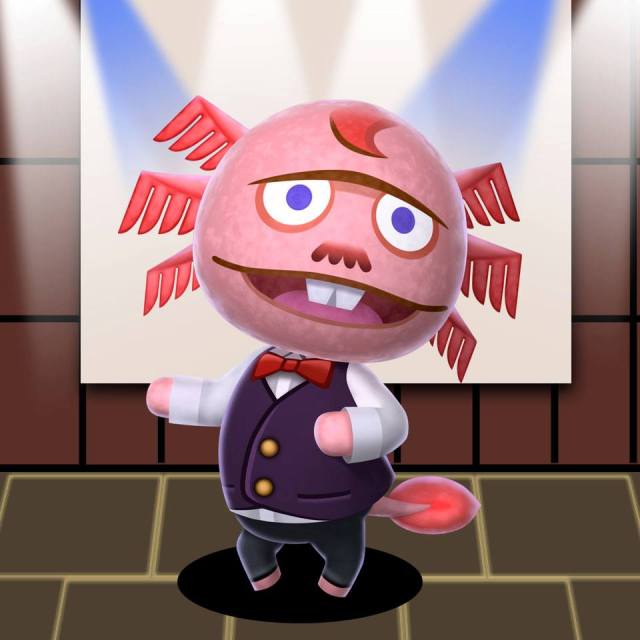#freshwater biology
Animal Crossing Fish - Explained #181
Brought to you by a marine biologist and the jokester himself…
CLICK HERE FOR THE AC FISH EXPLAINED MASTERPOST!
Gonna warn ya…this might be a long one. So instead of doing my usual introduction, I will start out by saying that we will be covering Dr. Shrunk the axolotl today, because today is April 1st and it’s just too perfect for me to miss out on. Dr. Shrunk has quite the journey during his professional career from AC Wild World to New Leaf. He’s a psychologist (so the Dr. title is real!), then a not funny comedian, and then the owner of ClubLOL. No matter where he’s working, though, his main job was to unlock emotions for the player to use, so explains why he’s not in New Horizons - the villagers stole his job.

They really went to town making Dr. Shrunk an accurate axolotl. (And don’t be surprised if you’re not pronouncing that right; I can’t either.) Of course, I will explain! See, the axolotl is actually a type of salamander, meaning that it is an amphibian. Amphibia, the class of the amphibians, are a group of tetrapods that, unlike all other extant tetrapods (mammals, reptiles, and birbs), they rely on water for at least part of their life cycle. Their eggs do not have hard, protective shells, so they can dry out very quickly. Amphibians also typically start life as larvae, just like fish do. The larvae have gills, but metamorphose into adults with lungs. Well…most do. The axolotl, Ambystoma mexicanum, doesn’t!

By ZeWrestler - Own work, CC BY 3.0, https://commons.wikimedia.org/w/index.php?curid=10201881
Axolotl adults still have their gills, which are the pink feathery stalks on either side of their head, and live their whole lives underwater, just like other amphibian larvae do. This retention of “juvenile” traits is called neoteny, which is the mechanism by which the animal’s body has slowed or delayed their physical development into adulthood. Meaning, they still look like “kids”, and that’s called paedomorphism. They do have an “adult color” of darker olive brown with gold speckling in the wild, but captive breeding has led to other color variants, of which, Dr. Shrunk doesn’t resemble any that I can find. He is most likely based off the leucistic variety, which is white with black eyes, as shown above. They have pretty weak limbs, too, which is featured on Dr. Shrunk and his tiny bent legs.
Despite the fact that the axolotl may be the most famous salamander out there, as it is a popular exotic pet, in the wild it’s considered Critically Endangered. The axolotl is native to Mexico, and at one time, its range extended throughout the wetlands and lakes of the Central Mexico Valley. However, it’s disappeared from most of that, now occupying a 467 square kilometer area within Mexico City. I can’t even begin to tell you how incredibly tiny that area is. Living as a sensitive freshwater species has all downsides as their remaining habitat is threatened by multiple factors, like pollution, development, and invasive species. Maybe one day the axolotl may only exist in captivity…and that’s no laughing matter.
And there you have it. Fascinating stuff, no?

